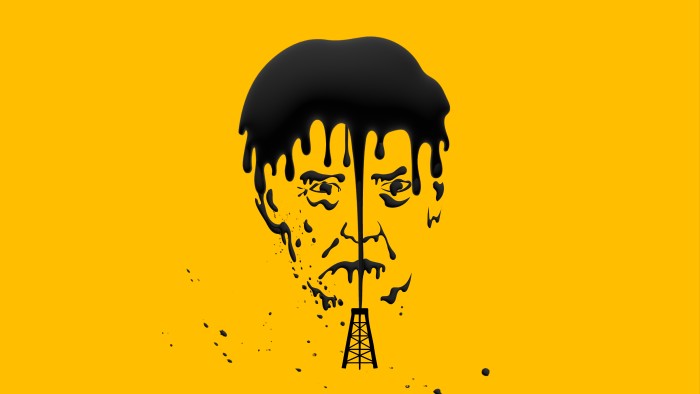Unlock the White House Watch newsletter for free
Your guide to what the 2024 US election means for Washington and the world
Six long months ago, when Donald Trump was campaigning to become the 47th president of the United States (remember that?) he promised to deliver a “winning” economy and to slash inflation. It seemed that voters believed him.
No longer. This week, the Conference Board released a survey showing that consumer confidence has fallen to “the lowest level in 12 years and well below the threshold . . . that usually signals a recession ahead”. Worse still, voters expect inflation to exceed 6 per cent because of Trump’s tariffs — dramatically higher than last year.
This might be skewed by partisan politics: Democrats are particularly gloomy, Pew data shows. And consumer sentiment surveys have mixed predictive value.
But the Conference Board’s poll is echoed by surveys elsewhere. And this week Austan Goolsbee, a senior Federal Reserve official, warned that this sentiment swing will make it harder for the Fed to cut rates, as Trump badly wants (partly in order to avert a debt explosion).
So what can the White House do? One obvious solution would be to reduce the angst and uncertainty about tariffs. But don’t bet on that happening anytime soon, least of all ahead of what Trump is calling “liberation day” on April 2. The president thinks that tariffs are a “beautiful word”, since they have given him leverage, and key advisers such as Peter Navarro deny that they are inflationary.
However, another issue to watch instead is the price of oil. For this is now viewed by some Trump advisers as a crucial anti-inflation tool — albeit one that inadvertently also reveals the contradictions in their policymaking.
On paper, Trump’s vision for fossil fuels seem clear. Scott Bessent, the Treasury secretary, has long championed a “three arrows” economic plan. This aims for a 3 per cent deficit, 3 per cent growth rate and an increase in oil and gas output by the equivalent of 3mn barrels per day.
Bessent argues that Trump’s “drill baby drill” mantra will boost American industry. It will also increase America’s geopolitical dominance, by taking pricing and supply power away from Opec countries.
More important still, lower petrol — or “gas” — prices could act as a deflationary force to offset the impact of tariffs, particularly when coupled with deregulation. Or so the argument in Trumpland goes. After all, energy is not just a big component of household spending; pump prices are one of the most visible barometers of inflation for voters. They are a heuristic, as Daniel Kahneman, the behavioural psychologist, might have said.
And since lower oil prices would also squeeze the economies of producers such as Russia and Saudi Arabia, a side benefit is raising Trump’s leverage in any negotiations with these countries. Hence the chatter around the White House is that the president should target a price of $60, or even $50, per barrel — compared to around $70 today.
However, there are three big headwinds to contend with. One is that Trump does not want to alienate the Saudi regime too deeply (although some advisers think that they could offset lower prices by purchasing Saudi oil to replenish low US stockpiles).
A second issue is revealed in an extraordinary survey released by the Dallas Fed this week. This shows that shale producers view the current economic chaos and price chatter as such a “disaster” that they are refusing to raise production. Or as one respondent said: “The threat of $50 oil prices by the administration has caused our firm to reduce its 2025 and 2026 capital expenditures.”
And while the Trump team is trying to counter this with loose permitting rules and performative attacks on renewable energy, JPMorgan calculates that the number of working wells or “rigs” has slightly fallen of late. This is a sharp, and ironic, contrast with what happened during the previous administration of Joe Biden, when the rig count surged.
The third problem is Trump’s own geopolitical stance. Instability in the Middle East — for example, the recent attacks on the Houthis — typically raises the oil price. So do tariffs. This week, say, oil prices rose after Trump threatened sanctions, or secondary tariffs, against anyone buying Venezuelan oil.
The next thing to keep an eye on is Canada. If Mark Carney, the new Canadian prime minister, wants to placate Trump, his best bet might be to pledge to sell (even) more of the 6mn barrels of crude oil his country produces each day to America (which is the world’s largest oil consumer), at cheap prices.
Since Trump is personally fond of Carney, this might work. But it is unclear if Carney will play ball. And if he does not — and Trump unleashes a fully-fledged trade war — that may blow up a cheap energy policy (even if a recession would normally drag prices down).
So if you are confused about Trump’s energy plan, you are not alone. And while fostering such confusion is partly a deliberate tactic designed to increase the administration’s negotiating leverage, not even Trump can ignore those consumer polls forever.
If inflationary expectations keep surging, expect more “drill, baby, drill” memes. Yes, this is partly a Trumpian gesture of defiance. But it might yet become a squeal of desperation too.
https://www.ft.com/content/c5a61c75-3ec4-45d6-aa83-e22604dedb61


